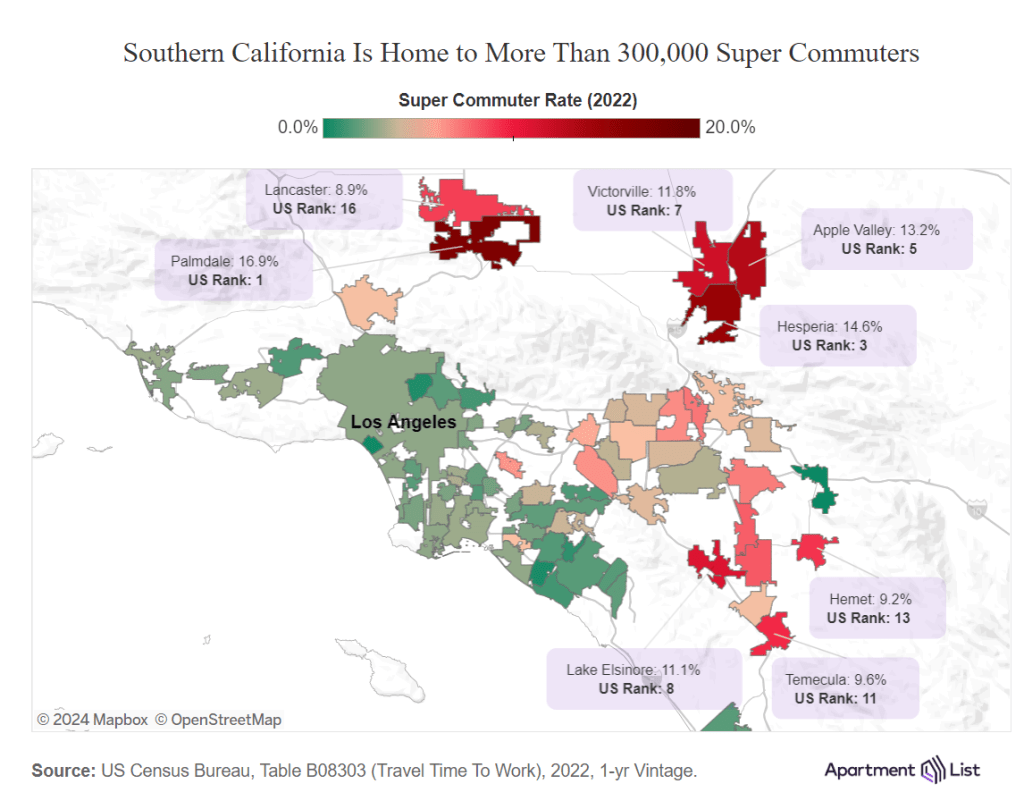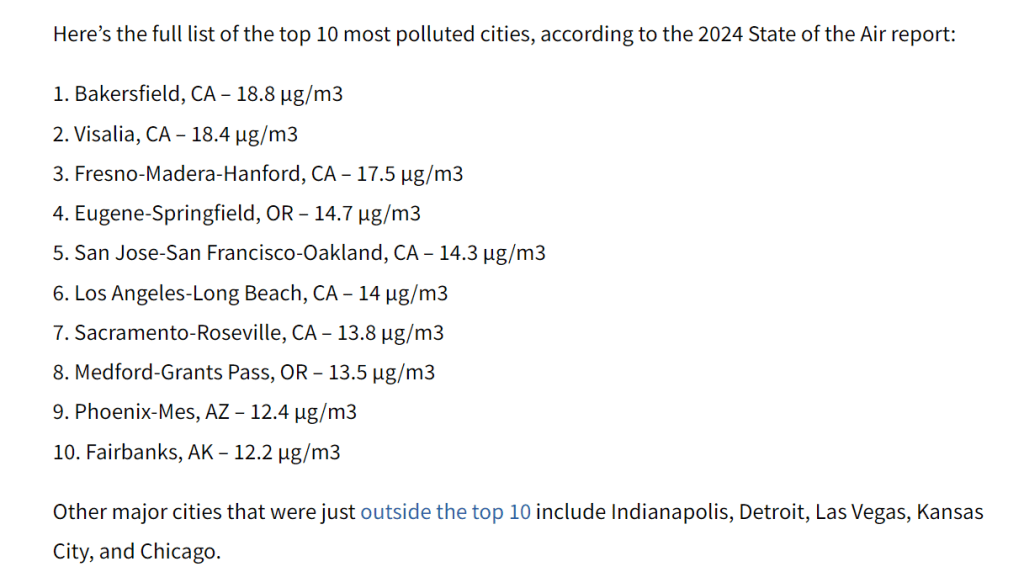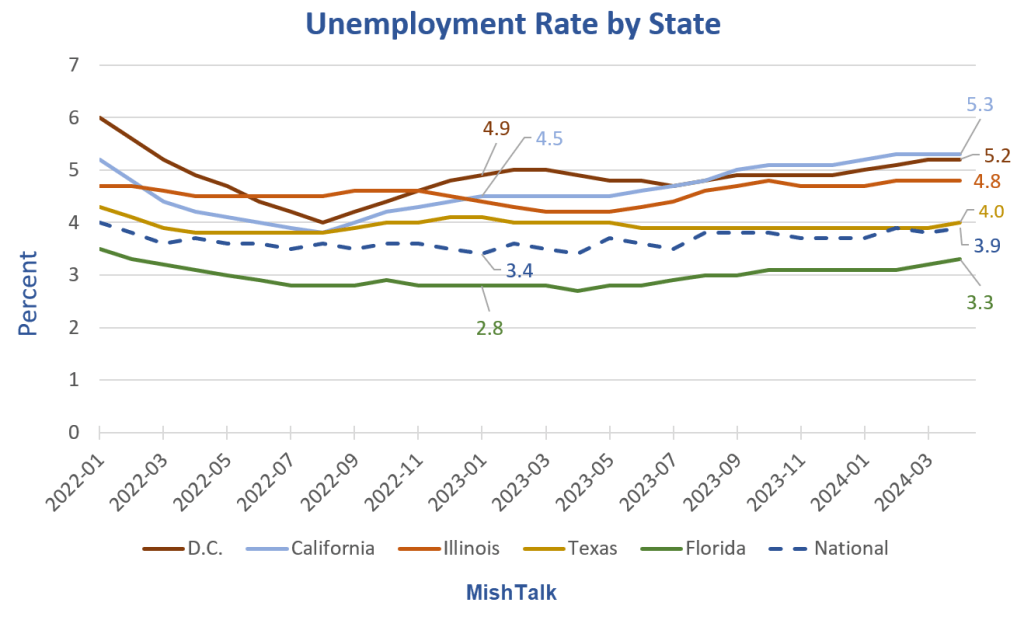Southern California leads the nation in super commuting, defined as taking 90 minutes or longer to get to work. What’s your commute?

Census department data is stale but interesting. There are 3.7 million super commuters, up from 2021 but down vs the pre-pandemic, work in the office standard.
The U.S. Added Nearly 600,000 Super Commuters in 2022
Apartment List reports The U.S. Added Nearly 600,000 Super Commuters in 2022
New data from the US Census Bureau shows a growing number of Americans are spending at least 90 minutes each way traveling to and from work, a practice known as “super-commuting.” This trend isn’t new; super-commuting was a growing problem throughout the 2010s, as metropolitan areas grew outward and workers moved further from job centers in search of affordable housing and homeownership. From 2010 to 2019, the super-commuting rate rose from 2.4 percent of the nation’s workforce to 3.1 percent. At its peak, 4.6 million workers were enduring three-plus hours of commuting daily.
The COVID-19 pandemic provided a brief respite, eliminating commutes for many and reducing commute times for the rest as traffic abated. As the economy went remote, the number of super commuters fell by over 1.5 million even as demand for suburban and exurban living remained strong.
But 2022 brought a resumption of the earlier trend. Remote work remained popular, but a shift back towards in-office work meant 10 million more workers commuted compared to 2021. Consequently, the number of super-commuters jumped by nearly 600,000 year-over-year. This is the largest single-year jump on record, and while still well short of the peak, it brings the total number of super-commuters back to 3.7 million.
Super Commuter Rates by County

The nationwide super-commuting rate is 2.7 percent, but double-digit rates can be found along the peripheries of several large metros in California and Texas, as well as Seattle, New York, and Washington DC.
300,000 Super-Commuters in Southern California

The nation’s highest super-commuter rate can be found in Palmdale, a 60-mile drive from Los Angeles, where 16.9 percent of all workers commute at least 90 minutes for work. Additionally, super-commuter rates in Victorville, Apple Valley, Hesperia, and Lake Elsinore all rank in the national top 10. Several other cities in the region have super-commuting rates that are more than double the national average of 2.7 percent. Connected to Los Angeles by traffic-snarled freeways and limited transit options, workers in these cities must tolerate long commutes in order to access the higher wages offered in the urban core.
Super Commuting & Its Implications
The relationship between where people live and where they work continues to evolve. A record number continue working from home; however, many employers appear to be shifting back to in-person or hybrid arrangements. This is putting more commuters on roadways and transitways daily – including more super-commuters – and resuming the pre-pandemic trend. Worsening commutes for drivers increase car-related expenses, impact physical health, and amplify the environmental consequences of suburban sprawl. Meanwhile, worsening commutes for transit riders harm quality-of-life in urban cities and disproportionately affect the car-free households that tend to be lower-income. Altogether, this trend may increase tension between workers and employers, as they negotiate working arrangements that affect their commutes.
Housing is of course central to any attempts at cutting back on super-commuting. In cities and suburbs alike, dense construction and infill development (built at a rate that scales appropriately with job growth) can improve housing opportunities so that those who wish to live closer to work can afford to do so.
What’s Your Commute Time?
That’s an interesting study.
I once had a 90-minute commute to get to downtown Chicago via train. I despised that commute with three wasted hours a day.
My commute time now is 0 minutes and has been since 2003.
Palmdale, California has the highest commute percentage at 16.9 percent.
Would you waste 3+ hours a day for the privilege of living in a tax hell hole in the middle of the desert with a commute to Los Angeles, the city with the most ozone pollution in the country?
This got me interested in dirty air statistics.
Please consider an American Lung Association Report on Dirty Cities.
10 Worst Cities

10 Best Cities

If I lived in California, my next commute would be out of the state.
The Hotel California Wealth Tax Advances, You Cannot Leave to Escape It
On January 10, I noted The Hotel California Wealth Tax Advances, You Cannot Leave to Escape It
Without a doubt that’s unconstitutional, but it is not in the least surprising that California would try that.
Twenty Percent of California Lives in Poverty, What’s Going On?

On June 15, I commented Twenty Percent of California Lives in Poverty, What’s Going On?
On a cost-adjusted basis, California leads the nation in percentage living in poverty. Blame the Progressive oligarchs like Governor Newsom.
I suggest voting with your feet.